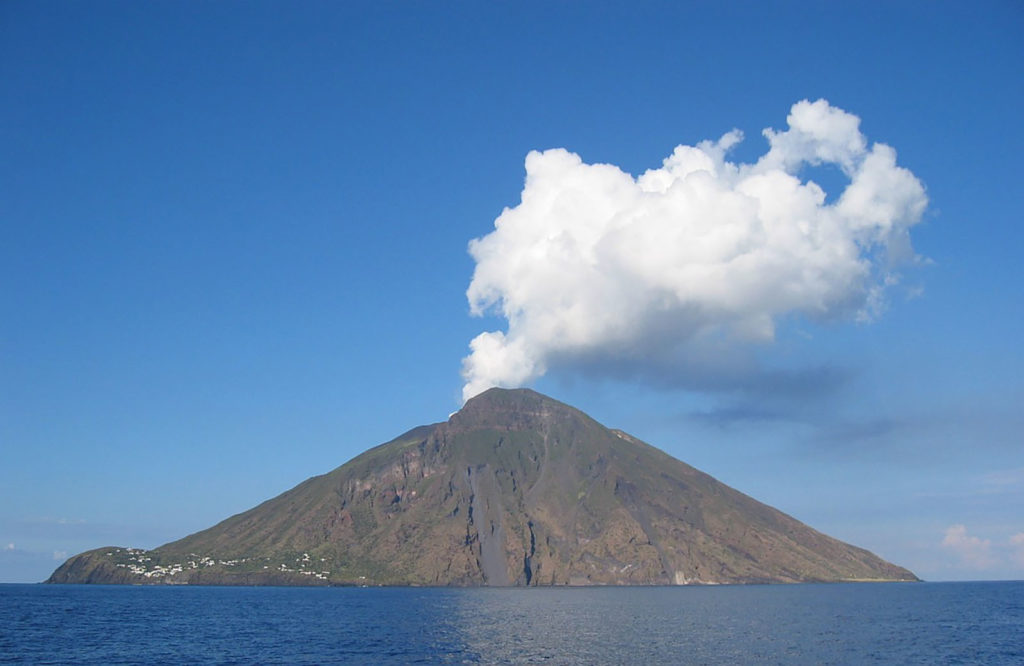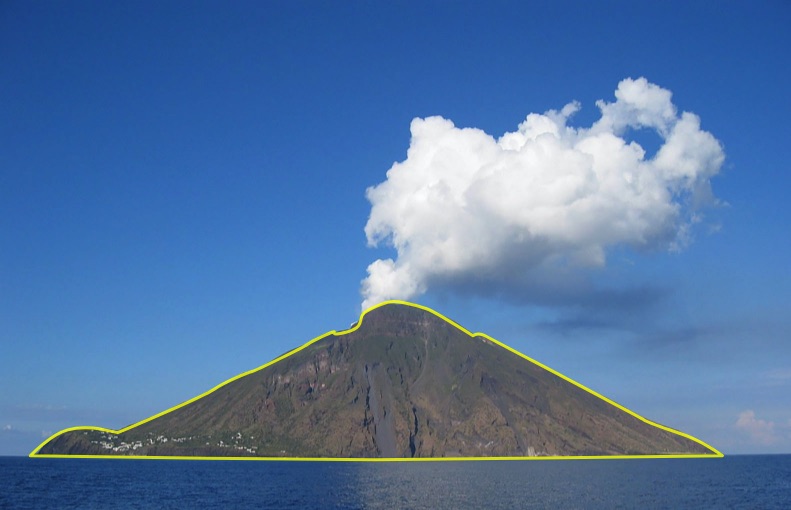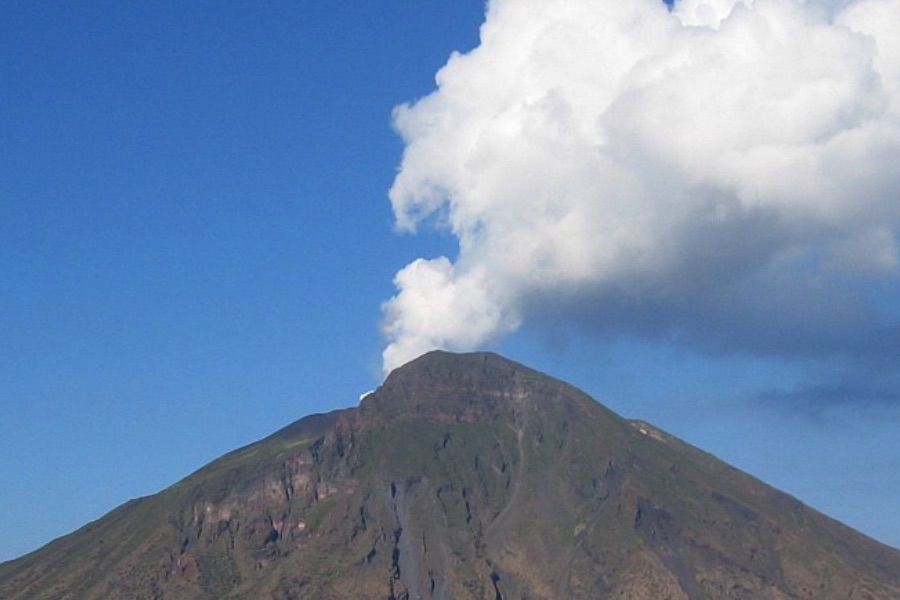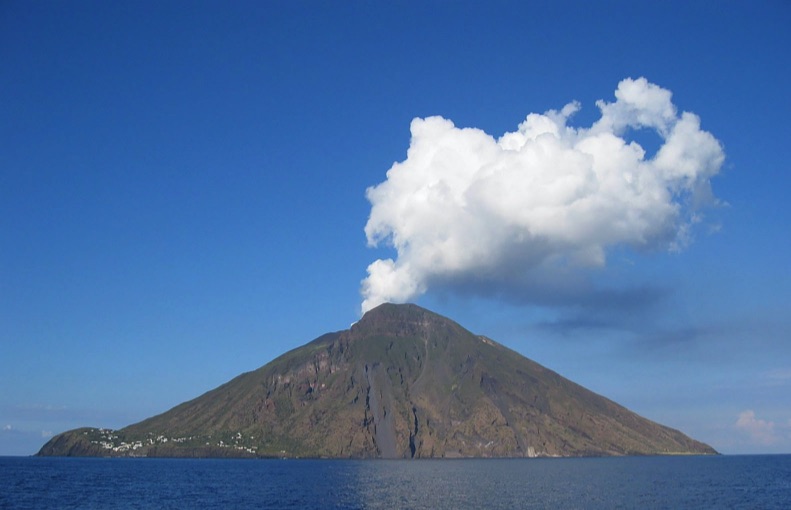Stromboli is the island with the most magic of the Aeolian Islands. Regardless of whether you are volcanologists, science lovers, philosophers, office workers or labourers, one sleep in Stromboli and observing its explosions will connect you to Mother Earth forever, allowing you to understand how she is really alive and “breathes” through volcanoes like Stromboli.
Stromboli is the volcano our imagination conjures up: it has an almost perfectly conical shape with explosions of lava from the craters at its summit.

Explosions in the summit craters have been virtually continuous over the last 120,000 years, though there were some periods of stagnation after a major part of the volcano collapsed. The explosions are more or less continuous; every 10 minutes one of the five summit craters launches lava up to 50-100 metres high, following a “
Strombolian
” eruption style named after this very island.
But Stromboli is not just explosions. Its charm is also clear at night: by walking with torches along its unlit alleys, it is also possible to admire the continuous red glow of the explosions from the village, sheltered from the summit craters. This glow is sometimes accompanied by the launching of some volcanic bombs.
Stromboli also means sitting at the table on the terrace of your house, and feeling the ground and table vibrate with the explosions. Have no fear, this is simply the rumbling of the volcano!
Stromboli also means observing hundreds of metres of beach with fine black volcanic sand, and very few pebbles, unlike the other islands of the archipelago. Stromboli’s beach is the widest sandy beach in the archipelago. Stromboli also means the fresh fish brought by local fishermen every morning. Fish tells the full story of this part of the sea, and will make you miss this enchanted place as soon as you return home.
Visiting Stromboli is not only a volcanological experience; it also involves human beings in nature and their connection to Mother Earth.


